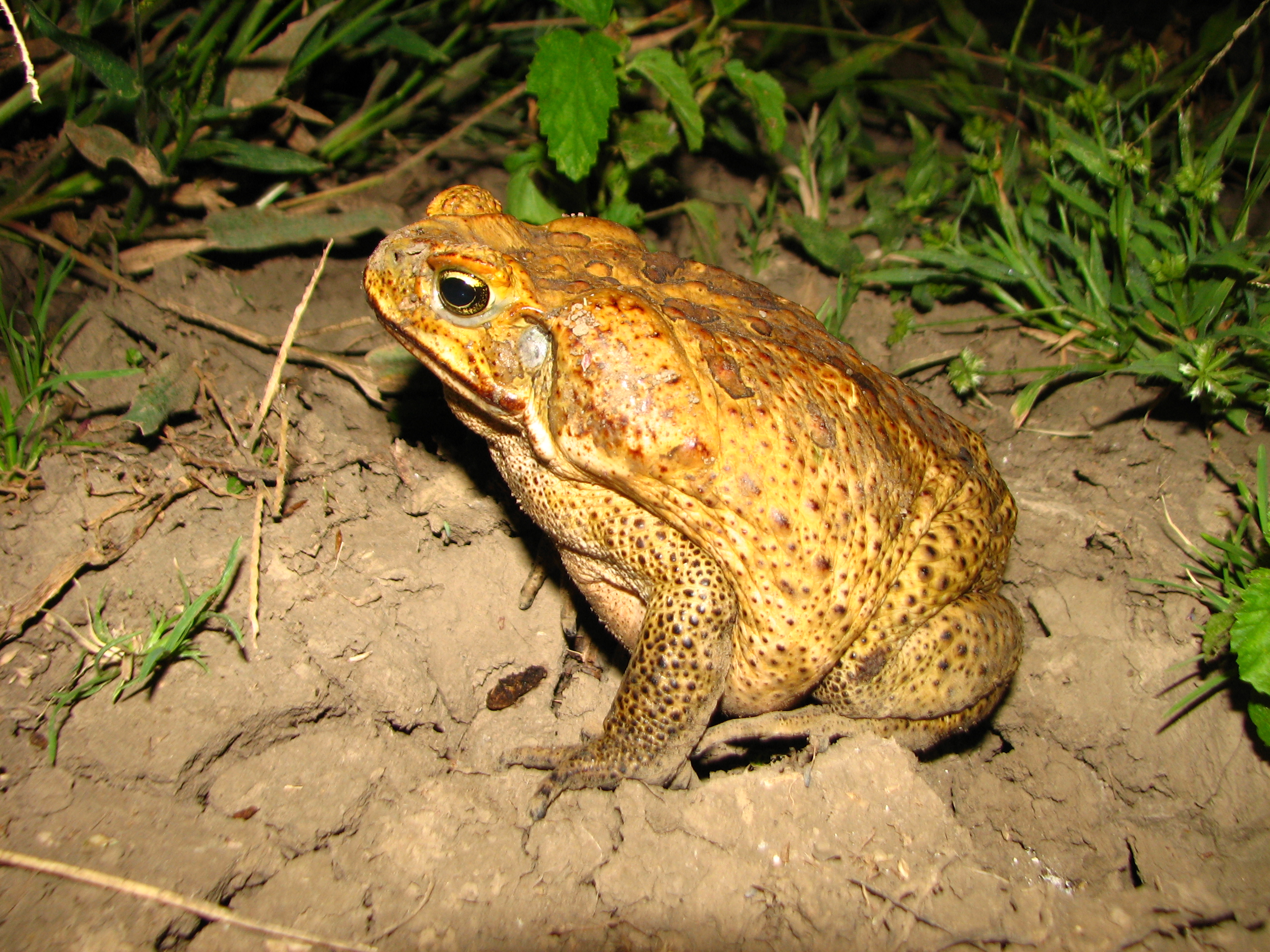
The Cane Toad Rhinella marina continues its’ march across Australia, spreading from its original introduction sites on the tropical north Queensland coast. It’s now seen regularly in southern inland Queensland towns like Roma, Injune and Miles.
Cane toads are often confused with some of our larger kinds of native frogs. This sometimes leads people to kill frogs in the mistaken belief that they are getting rid of a pest.
The frog most likely to be confused with toads is the very large New Holland Frog or Eastern Snapping Frog Cyclorana novaehollandiae, which is common in Outback Queensland (see photo).
The photo’s here show a typical cane toad and some of the native frogs that are likely to be confused with toads. Have a look at them and pick the differences!
Tips for Toad Identification
Size: An adult toad is often much bigger than even the largest native frog. However, some frogs can be quite large so overlap occurs.
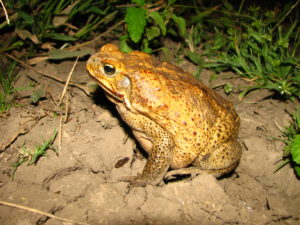
Cane Toad
Skin: Toads have obviously warty, dry-looking skin, with large glands over the shoulders. Our native frogs may have some glandular lumps and bumps but their skin usually has a glossy moist appearance.
Call: The toad’s call is distinctive and unlike any that of any of the frogs; a rapid series of popping notes that can remind you of a single cylinder engine – “du-du-du-du-du-….”.
Eggs: Toads lay their eggs in long strings under the water surface. Frogs’ eggs are usually in rounded masses, and in some species the egg masses are foamy so they float in the water.
Tadpoles and young: Toad tadpoles are jet black all over, while frog tadpoles have pale or translucent bellies. Young toads to about 10mm could be confused with small frogs but their habit of gathering in large numbers around the water’s edge helps identify them.
Frogs of southern inland Queensland that can be confused with the Cane Toad.
Adults
New Holland Frog or Snapping Frog Cyclorana novaehollandiae, the largest frog in this area.
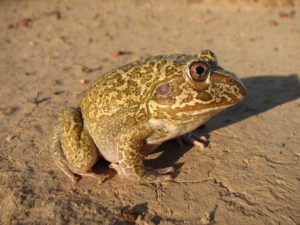
Pobblebonk frog Limnodynastes terraereginae
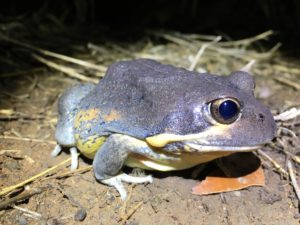
Ornate burrowing frog Platyplectrum ornatum
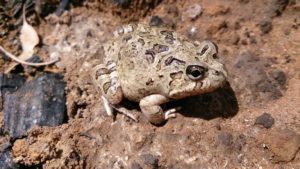
Juveniles
The small burrowing species e.g. chubby gungan Uperoleia rugosa juveniles of Cyclorana spp. and the ornate burrowing frog
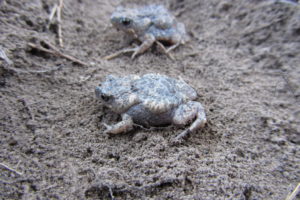
Juvenile frog
With practice all these can be separated from the toad using the features described above.
Join one of our professional ecologist guides on a tour today! You’ll learn a tonne and make memories for life.

